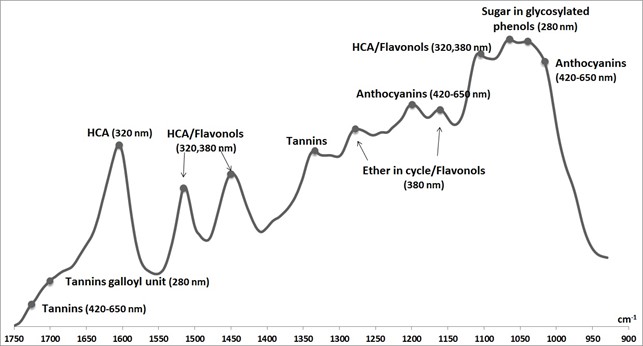By Paola Scano
An epidemiological representative study demonstrated that people living in the mountainous region of Sardinia, an island in the center of the Mediterranean sea, are characterized by an extreme longevity (Deiana et al., 1999). This longevity presents exceptional gender equality, in the sense that the probability of men reaching the 100 year milestone is equal to that of women, as opposite to the common trend in developed countries, where it has been widely documented that females live longer than males. The lower female/male ratio among centenaries has to be attributed to a longer life span of males rather than to higher mortality of females (Poulain et al., 2011). An area with significantly higher levels of longevity and lower female/man ratio among centenarians has been identified in the central-eastern part of the island (Barbagia and Ogliastra) and was called the Blue Zone (Deiana et al., 1999). The topic of researches aimed to the identification of longevity determinants shared by people living in such area, suggest that, besides biological and genetic factors, the life style factors including and the Mediterranean diet, may play an important role. A food factor that has long been counted among the causes is the consumption of Sardinian red wine, in fact some epidemiological studies have shown its ability, if taken in moderate quantities, to protect the arteries from aging. It was the English researcher Roger Corder, in an article published in the prestigious journal Nature in 2006 (Corder et al., 2006), the first to affirm that the wine produced in the Sardinian mountains has a high content of oligomeric procyanidins that have cardioprotective action. The English researcher, after carrying out a comparative study of a series of red wines from various European regions, hypothesized that the constant consumption of red wine produced in Barbagia and Ogliastra, especially from the male population, it may have been one of the protective factors against heart disease and ultimately one of the causes of male longevity of this region. Among red wines drunk in this area of Sardinia, Cannonau is by far the most widespread cultivar-wine. The red wine is obtained from the Cannonau variety through traditional manufacture. In-vitro and ex-vivo alleviation of oxidative stress and in vitro vasodilatory activity was observed for Cannonau wine (Tuberoso et al., 2013). Moreover, a direct antioxidant action of the phenolic fraction from the red wine Cannonau on enterocytes exposed to oxidizing species was demonstrated (Biasi et al., 2013, Deiana et al., 2012).
Innovation meets tradition: Today, the traditional wine production is worldwide facing the challenges of innovation, sustainability, safety, and productivity, while at the same time protecting product’s typicity. For real-time process control and quality assessment, in order to better manage fermentation and bottling processes, different automated MIR instruments are nowadays available on the market, able to give a fairly good estimate of different wine parameters, among which the polyphenol content, in short time and avoiding tedious sample preparation (Cozzolino 2015; Di Egidio et al., 2010). In MIR spectra, most of the information regarding polyphenols is expressed in the fingerprint region between 1800-900 cm-1. This region contains bands due to multiple different vibrational modes of polyphenols and yet fully assigned. A deeper knowledge of the polyphenol classes that shape this spectral region can be useful to perform more accurate phenol calibrations so to help, in the last instance, producers to obtain the optimal polyphenol content in wines. Considering that the UV-Vis spectroscopy is one of the most used elective technique for the identification and quantification of wine polyphenols (Aleixandre-Tudo, 2018), data fusion of MIR with UV-Vis spectral information can lead to a more accurate MIR polyphenol assignments.
The polyphenol fraction of Cannonau and its evolution during winemaking was studied by integrating spectral data from the synergistic and complementary analytical platforms FT-IR and UV-Vis spectroscopies (Scano, 2021). To this goal, samples of Cannonau were collected at different time steps of the wine-making process, and the polyphenolic extracts, obtained by solid phase extraction, were analyzed by Attenuated Total Reflectance-Fourier Transform Infrared (ATR-FTIR) and UV-Vis spectroscopy. The FT-IR spectral region in the range 1750-950 cm−1 was digitized to 451 data points while the UV-Vis spectra in the range 240 to 650 nm to 409 spectral data. A matrix of the Pearson correlation values was obtained and then visualized as heat map. Analysis of correlations between UV-Vis and MIR spectral data allowed the assignments of the MIR fingerprint region of Cannonau polyphenols (details are reported in Scano 2021). This work also emphasized the power of the heat map visual tool to explore complex associations between two analytical platforms such as FT-IR and UV-Vis spectroscopies.

To protect and preserve the values and quality of traditional products, the most modern analytical investigation techniques must be used. Only in this way we will be able to continue producing the wine of the centenarians.


Paola Scano, is a professor at the University of Cagliari, Italy. She obtained a PhD degree at the University of St. Andrew’s, UK, in Theoretical Chemistry. Currently she teaches Spectroscopic methods for the study of food matrices. Her research focuses on Spectroscopy (UV-Vis, MIR, 1H- 13C- NMR) and multivariate statistical data analysis for the study of biological matrices. She can be reached by email at scano@unica.it.
https://orcid.org/0000-0001-8350-8990
References
- Deiana L., Ferrucci L., Pes G.M., Carru C., Delitala G., Ganau, A., Mariotti S., Nieddu A., Pettinato S., Putzu P., Franceschi C. and Baggio G. (1999), “AKEntAnnos. The Sardinian Study of Extreme Longevity”, Aging Clinical and Experimental Research, 11, pp. 142-149.
- Poulain, M., Pes, G., & Salaris, L. (2011). A population where men live as long as women: Villagrande Strisaili, Sardinia. Journal of Aging Research, 2011.
- Corder, R., Mullen, W., Khan, N. Q., Marks, S. C., Wood, E. G., Carrier, M. J., & Crozier, A. (2006). Oenology: red wine procyanidins and vascular health. Nature, 444, 566. http://dx.doi.org/10.1038/444566a
- Tuberoso, C. I. G., Boban, M., Bifulco, E., Budimir, D., & Pirisi, F. M. (2013). Antioxidant capacity and vasodilatory properties of Mediterranean food: the case of Cannonau wine, myrtle berries liqueur and strawberry-tree honey. Food Chemistry, 140(4), 686-691. https://doi.org/10.1016/j.foodchem.2012.09.071
- Biasi, F., Guina, T., Maina, M., Cabboi, B., Deiana, M., Tuberoso, C. I., Calfapietra, S., Chiarpotto, E., Sottero, B., Gamba. P., Gargiulo, S., Brunetto, V., Testa, G., Dessı`, M.A., Poli, G., & Leonarduzzi, G. (2013). Phenolic compounds present in Sardinian wine extracts protect against the production of inflammatory cytokines induced by oxysterols in CaCo-2 human enterocyte-like cells. Biochemical pharmacology, 86(1), 138-145. http://dx.doi.org/10.1016/j.bcp.2013.03.024
- Deiana, M., Loru, D., Incani, A., Rosa, A., Atzeri, A., Melis, M. P., Cabboi, B.,Hollecker, L., Pinna, M. B., Argiolas, F., Murru, M., & Dessì, M. A. (2012). Wine extracts from Sardinian grape varieties attenuate membrane oxidative damage in Caco-2 cell monolayers. Food chemistry, 134(4), 2105-2113. https://doi.org/10.1016/j.foodchem.2012.04.014
- Cozzolino, D. (2015). The role of visible and infrared spectroscopy combined with chemometrics to measure phenolic compounds in grape and wine samples. Molecules, 20(1), 726-737. https://doi.org/10.3390/molecules20010726
- Di Egidio, V., Sinelli, N., Giovanelli, G., Moles, A., & Casiraghi, E. (2010). NIR and MIR spectroscopy as rapid methods to monitor red wine fermentation. European Food Research and Technology, 230(6), 947-955. https://doi.org/10.1007/s00217-010-1227-5
- Aleixandre-Tudo, J. L., & du Toit, W. (2018). The role of UV-visible spectroscopy for phenolic compounds quantification in winemaking. In book: Frontiers and new trends in the science of fermented food and beverages. IntechOpen. DOI: 10.5772/intechopen.79550
- Scano, P. (2021). Characterization of the medium infrared spectra of polyphenols of red and white wines by integrating FT IR and UV–Vis spectral data. LWT, 147, 111604

